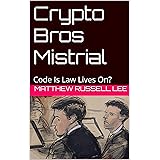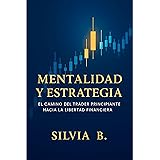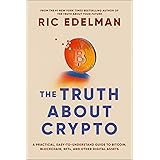It is commonly observed that a significant percentage of trading losses, particularly among newer participants, are attributable to misinterpreting market signals or impulsively chasing price movements. The video above succinctly introduces a crucial concept in price action analysis: the exhaustion move. This specific market phenomenon, often overlooked by novice traders, can be a potent indicator of an impending market reversal, signaling a shift from strength to weakness.
A comprehensive understanding of an exhaustion move is considered vital for those seeking to refine their trading strategies. This article will delve deeper into what constitutes an exhaustion move, how it is identified through price action, and why its recognition can be instrumental in protecting capital and making more informed trading decisions. Furthermore, practical approaches for incorporating this knowledge into a robust trading plan are discussed.
What is an Exhaustion Move in Trading?
An exhaustion move is typically characterized by a rapid, often final, surge in price in the direction of the prevailing trend, which is then swiftly followed by a sharp reversal. This pattern is not an indication of continued strength; rather, it suggests that the current momentum has been depleted. The buying or selling pressure that has driven the price has been fully expended, leaving the market vulnerable to a counter-move.
Essentially, the market is said to have exhausted its supply of eager buyers in an uptrend, or eager sellers in a downtrend. This scenario is often observed as the “last gasp” of a trend. The swift drop mentioned in the video serves as a prime example of this pattern unfolding, where buying enthusiasm quickly gives way to selling pressure.
Recognizing Market Exhaustion Through Price Action
Identifying an exhaustion move requires careful observation of price action, as highlighted in the video. Several key indicators can be utilized to spot these critical junctures in the market. A strong preceding trend, where price has been moving consistently in one direction, is usually a prerequisite.
Furthermore, the move itself will typically be fast and aggressive, indicating a final push by one side of the market. This swift increase in velocity often signals that all available buying power has been committed, leaving no reserves to sustain the advance. The subsequent sharp rejection, where sellers promptly take control, confirms the exhaustion.
Another common observation is that during an exhaustion move, volume may spike significantly, suggesting a high level of participation in this final push. However, a rapid decrease in volume following this spike, especially during the reversal, further supports the notion that the prior momentum has faded. A thorough analysis of these elements can significantly improve a trader’s ability to identify legitimate exhaustion moves.
Understanding the Psychology Behind Exhaustion in Trading
The psychology of market participants plays a significant role in the formation of an exhaustion move. As a trend matures and prices push higher, for instance, a sense of FOMO (Fear Of Missing Out) often encourages late entrants to buy aggressively. These buyers are often the last ones to jump into a rally, pushing prices to their absolute peak.
However, once these late buyers have entered, there is a diminishing pool of new buyers to sustain the upward movement. At this point, profit-taking by earlier entrants is initiated, and sellers who have been waiting for an opportune moment enter the market. The sudden influx of selling pressure, combined with the lack of new buying, causes the price to reverse sharply, illustrating the concept of market exhaustion.
This dynamic creates a situation where the market structure becomes fragile, susceptible to a sudden and powerful shift in sentiment. Traders who understand this underlying psychological shift are better positioned to anticipate potential reversals. Decisions are therefore informed by the broader market sentiment, not just the immediate price action.
Strategies to Avoid Chasing Late Moves
The critical advice “Don’t chase late moves” is a cornerstone of prudent trading, especially when an exhaustion move is suspected. Chasing a late move often means entering a trade just as the trend is about to reverse, leading to immediate losses. Instead, a more disciplined approach is advocated, where patience and strategic entry points are prioritized.
One strategy involves waiting for clear confirmation of the reversal before initiating a trade in the opposite direction. This might include waiting for specific candlestick patterns, a break of a support or resistance level, or a cross of moving averages. Another approach involves setting predefined risk parameters and never deviating from them, even when the market appears to be offering irresistible opportunities.
Furthermore, the use of limit orders, rather than market orders, can prevent premature entries into fast-moving markets. By allowing the price to come to a predetermined level, traders can avoid getting swept up in the emotional exuberance or panic of an exhaustion move. Risk management rules are considered paramount in these volatile conditions.
Integrating Exhaustion Move Analysis into Your Trading Plan
Incorporating the analysis of exhaustion moves into a comprehensive trading plan can significantly enhance decision-making. First, a robust understanding of trend identification is required, as exhaustion moves occur within established trends. Regular practice in identifying quick price pushes followed by sharp drops helps in honing this skill.
Next, confluence with other technical indicators can strengthen the analysis. For example, divergence on an oscillator like the Relative Strength Index (RSI) or Stochastic, which shows momentum weakening while price continues to rise, can add weight to the exhaustion signal. Moreover, identifying key support and resistance levels can provide context for where exhaustion might be expected.
Finally, a clear exit strategy should always be part of the plan, irrespective of whether an exhaustion move is anticipated. This includes setting stop-loss orders to limit potential losses if the market does not behave as expected. By consistently applying these principles, traders can cultivate a more disciplined and profitable approach to navigating the complexities of an exhaustion move.







